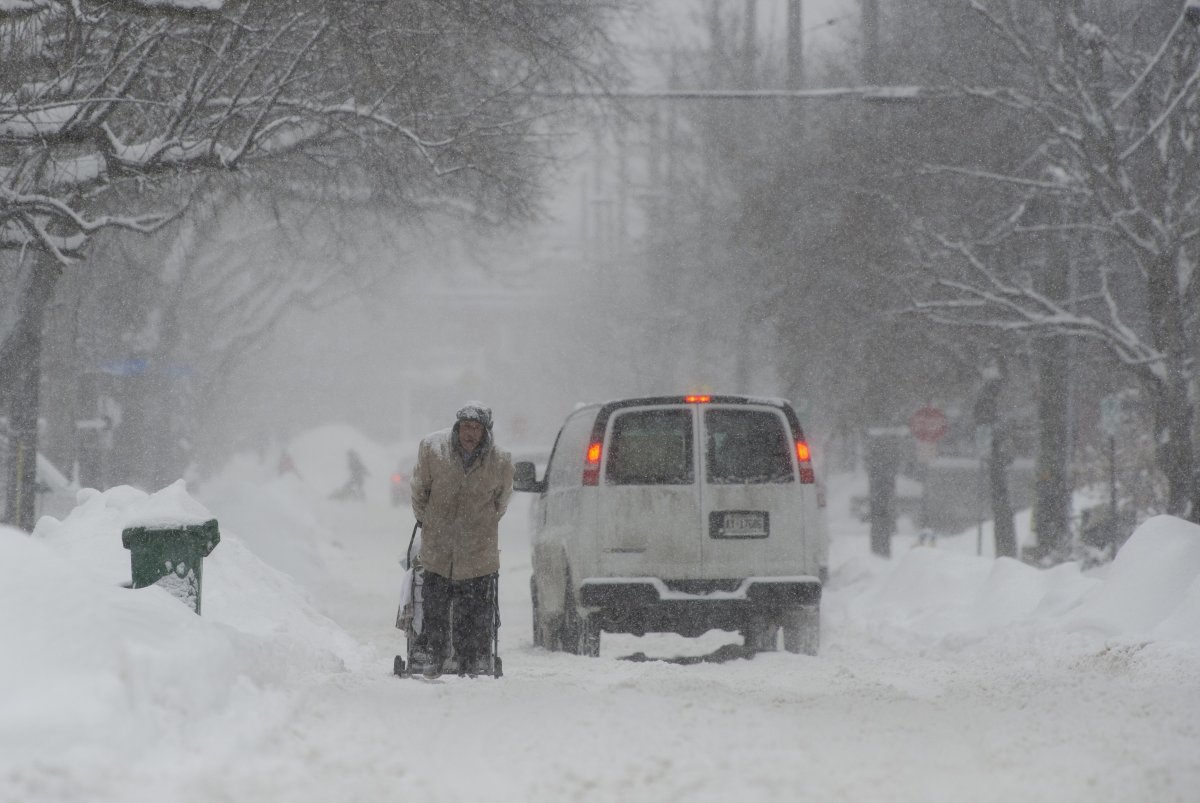Following a challenging winter for the national capital, the city’s transportation committee on Wednesday approved two motions directing staff to look into both short- and long-term solutions for better maintaining and clearing Ottawa’s roads and sidewalks during the wintertime.

Committee chair Stephen Blais, councillor for Cumberland ward, received support for his motion asking staff to review the city’s delivery of winter operations and come back to committee with their findings ahead of the 2019-20 winter season.
Meanwhile, after the committee carried a separate motion tabled by Bay Ward Coun. Theresa Kavanagh, staff will also study and prepare a report on ways to modernize the city’s maintenance program ahead of the 2022 budget meetings.
Both Blais and Gloucester-Southgate Coun. Diane Deans said they think Ottawa’s changing weather patterns warrant improving the current model.
“It’s been close to 20 years since amalgamation; we set the winter maintenance standards at amalgamation and they have served us relatively well,” said Deans, who sits on the transportation committee.
“But as time goes on, we’re seeing the impacts of climate change, we’re also seeing that our winter freeze thaw cycles are changing, so our standards really do need to reflect that.”
The removal of snow and ice on both streets and sidewalks this year has been a source of frustration for many Ottawa residents. One of those residents, Stephen St. Denis, who uses an electric wheelchair, told the transportation committee on Wednesday that changes need to happen sooner rather than later.
Alex Cullen, speaking on behalf of the Federation of Citizens’ Associations of Ottawa, argued that residents cannot be expected to go through more winters like the one they’ve just experienced.
“We all came through a very harsh winter, I think, especially for our vulnerable street users,” said Deans. “It’s been a long haul this winter and whatever we can do to improve that, we should be doing.”
Part of the problem facing the city is that its various wards and communities all handle winter maintenance differently. Blais said that it’s time for the city to come up with a universal plan for handling the snow and ice.

“Bring the different zone supervisors together, take a holistic approach to how things actually work — based on how much money we’ve given them, based on what standards we’ve asked them to meet — and come up with recommendations so that we can have some consistency from Orléans to Kanata, from Carp to Navan, right across the city, while we do a bigger review to see if our standards should change,” the councillor said.
“Staff have told us they believe that there are ways they can be more efficient and be more consistent across the city based on our current standards, based on our current operating allocations. We’ve asked them to show us and we expect that before this upcoming winter.”
Updates to temporary traffic calming measures program
The committee also heard an update on the temporary traffic calming measures program, as speeding and other traffic concerns continue to be one of the most talked-about topics across Ottawa.
The 2019 municipal budget, approved earlier this year, bumped the annual pot of cash each councillor receives to spend on traffic calming measures in their respective wards up to $50,000 from $40,000. The money can be used for measures such as as speed display boards and flexible centreline signage, commonly known as “flex sticks.”
Asked whether the budget increase will be enough to meet demand, Deans said “it’ll be interesting to see …. how it goes.,” noting that some measures cost far more than others.
“So if you consider, for example, my ward, I don’t want to create a false expectation that I can put speed tables where people want them when I really don’t have the budget to be able to do that.”




Comments